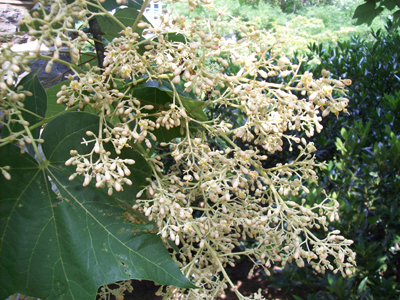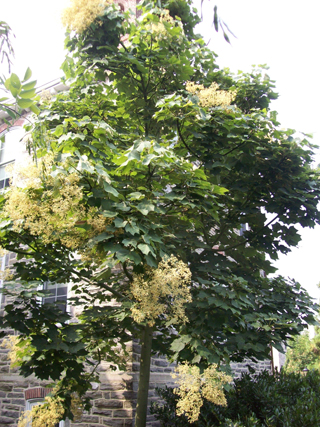Firmiana simplex

The John W. Nason Garden is filled with dramatic textures and forms. The fine texture of Nasella and Amsonia juxtapose beautifully with large-foliaged plants like Catalpa, Paulownia and Silphium. Firmiana simplex, the Chinese parasol tree, is another dramatic character. The two specimens located on the grounds of the Scott Arboretum are found behind Trotter Hall. Firmiana hails from Asia and is a member of the Sterculiaceae or chocolate family.

Firmiana simplex flower close up. photo credit: J. Coceano
The Hillier Manual of Trees and Shrubs notes that Firmiana is “a noble foliage tree of medium size for the mildest climates.” The large, rich green maple-like leaves are the main appeal; however, Firmiana is not simply a one hit wonder. Creamy flowers are produced terminally in June and July on 10 – 20” panicles! The fruits and subsequent seeds are most intriguing. While fruits may vary in form, many are star shaped. As the seeds mature, the pods inflate and then open allowing the single seed to dangle within the cluster. Other attributes include yellow fall color, noticeable lenticels along the bark, and few if any pest problems. Firmiana can be grown as a single stem specimen or as a multi-stemmed cutback shrub. The Morris Arboretum uses the plant as a cutback shrub in the Rose Garden to great effect. While a noted invasive in southern states (Texas), this 30-45’ tree bears further consideration in Mid-Atlantic gardens. However, Charles Cresson noted some “seeding around” in his Swarthmore garden.

Firmiana simplex in flower. photo credit: J. Coceano





No Comments